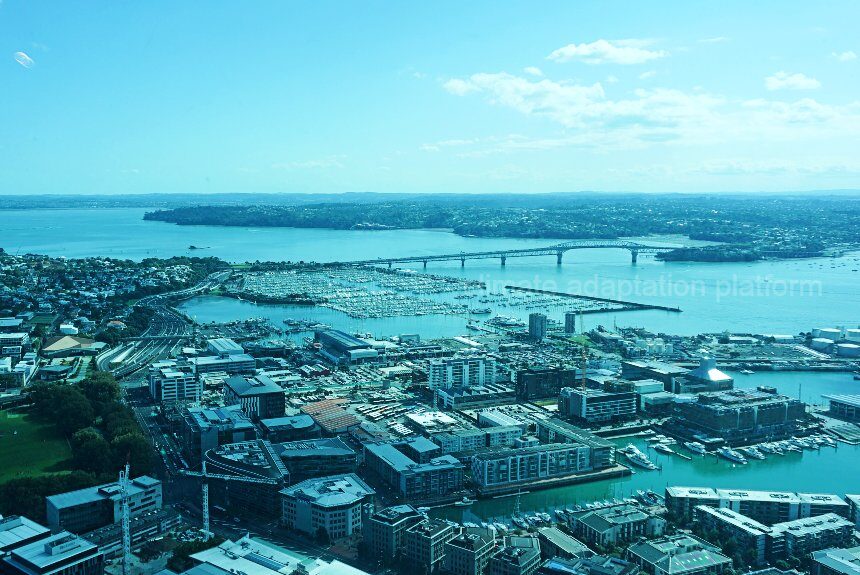Auckland, New Zealand’s biggest city, went through its worst floods in late January. A record amount of rainfall on Friday night, 27 January 2023, resulted in flooding and landslips, causing four deaths and widespread damage to homes and infrastructure.
Met Service said record downpours had fallen on Auckland in 24 hours. By 1 am, the region had recorded 249 mm of rain, breaking the February 1985 record of 161.8 mm of rain that also fell on a single day. A state of emergency was declared late in the evening on Friday.
Hundreds of staff and contractors were busy helping the Auckland Emergency Management, emergency services, and those most affected by the floods and heavy rains.
Any city would have buckled under that amount of rain – four months’ worth of rain pouring in just a single day, but many things could have been done better to avoid the worst impacts (Welch, 2023).
We all know that building over surfaces with impermeable materials like concrete removes its ability to absorb moisture or rainwater. Each building or road replaces the earth’s natural stormwater system, such as plants, soil, and channels that absorbs or retains the water.
So, the more structures we build, the more stormwater we need to drain, the article says. But as stormwater infrastructure ages, its capacity to capture stormwater also declines, hence the need for regular maintenance and upgrading to ensure that it continues to provide the expected service levels.
The deluge in Auckland has overwhelmed the system. The network of underground pipes, including wastewater pipes, can only handle as much water and will eventually get flooded, bringing this excess moisture to the surface. Water contamination can cause health and environmental hazards when this happens.
The article notes that concrete-paved roads and parks, due to impervious surfaces, have contributed to the flooding and have become rivers themselves.
However, learning from this experience, there is a better way for Auckland to design its built environment. The city can either construct more and bigger stormwater infrastructure worth billions of dollars or create a “sponge city.”
Chinese architect Kongjian Yu conceptualised sponge city in the early 2000s. It’s a departure from the traditional way of building infrastructure – grey or hard, man-made infrastructure like pipes and tunnels that need regular repair and upgrading due to age.
Instead, it mimics and incorporates nature’s ability to absorb, store, and filter water. To mitigate flooding, sponge city includes green roofs, rain gardens, and permeable pavements.
There are already examples of “sponge city” concepts applied in Auckland, but it is not enough and needs to expand.
The Te Auaunga (Oakley Creek), the city’s most extended urban stream, has undergone a lot of modification. The creek, surrounded for most of its length by suburban development, also serves as a natural catchment area.
There is a great community interest in restoring and revitalising the creek because of its many ecological features, one of which is having a natural waterfall. The stream is also an archaeologically significant site for Māori as they used it to reach the inland.
The tight rock that used to line the stream was removed, and its banks are now lush with native plants to filter rubbish and sediments from the surrounding suburbs.
Julie Fairey, chair of the Puketāpapa local board, explains that the creek should capture the stormwater r. When it overflows, which it is expected to do during heavy rains, the parks attached to it will “soak it up like a sponge and slowly release it back into the creek” (Evans, 2022).
The Te Auaunga (Oakley Creek) is just one example that uses nature-based solutions to mitigate floods, and more projects like these should be built in the city.
Timothy Welch, Senior Lecturer in Urban Planning, University of Auckland and the author of the Conversation article, says, “The sponge city concept, and ideas about letting nature handle stormwater, don’t have to be extravagant or expensive. They can be as simple as planting more trees and greenery, using less pavement for driveways or more porous cement for car parks.”
“In a way, we should do less building and let nature do what it was meant to do.”
Regarding Auckland’s historic flooding, he states, “The stark reality is the flooding we experienced this week, and arguably the storm itself, are of our own making. We’ve built a supercity covered in impervious surfaces, expanded the built environment across sensitive (and flood-prone) areas, and created massive greenhouse gas emissions destabilising the climate.”
As climate change spawns more intense and frequent storms, cities can invest in expensive stormwater infrastructure that could fail when its capacity is exceeded or get more innovative and proactive about designing our cities, including not developing or building in low-lying and flood-prone areas and more uptake of nature-based solutions to relieve the pressure off of grey infrastructure.
Sources:
Wild weather: State of emergency in Auckland after widespread rain and flooding. (28 January 2023). NZ Herald. Retrieved from https://www.nzherald.co.nz/nz/auckland-flooding-ranui-streets-homes-swamped-motorways-blocked-fenz-nzdf-called-in/3YQ54VEQTJE2HJDRYHLYAYHOTQ/
Welch, T. (2023, 29 January). Auckland floods: even stormwater reform won’t be enough – we need a ‘sponge city’ to avoid future disasters. The Conversation. Retrieved from https://theconversation.com/auckland-floods-even-stormwater-reform-wont-be-enough-we-need-a-sponge-city-to-avoid-future-disasters-198736
Evans, K. (2022, August 24). Cities need to become more ‘spongy’. Auckland is leading the way. BBC. Retrieved from https://www.bbc.com/future/article/20220823-how-auckland-worlds-most-spongy-city-tackles-floods



Leave a Reply